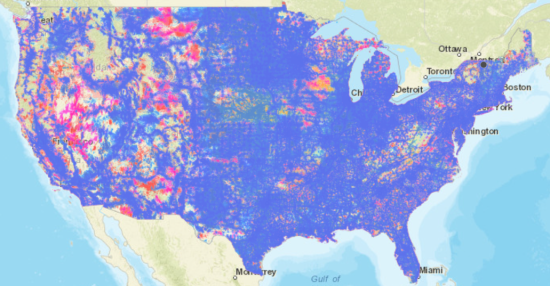End of 2G and 3G Cell Networks Risky for AT Users

Reprint from AT3 Center News & Tips
Keep your mobile phone, assistive technology (AT), and medical devices working during this wireless cell service transition. Read this urgent issue brief from AT3 Center.
The end of older cell networks is cause for concern, especially for disabled and older Americans.
What is happening to 2G and 3G cell networks?
During 2022, mobile wireless carriers are “sunsetting” their 2G and 3G cell networks. Wireless carriers are phasing out these services to make room for faster and more powerful networks, including 5G. Devices that rely solely on 2G and 3G will stop working (as well as some older 4G models). In addition, areas of the U.S. that do not have 4G/LTE service coverage will lose access to mobile wireless (“cell”) services completely. “The end of 3G is perhaps the most under-covered story in the industry right now with the widest potential impact, involving millions of cars from nearly every major automaker,” observes Rob Stumpf on December 9th, 2021, for The Drive.
Of equal concern should be a consumer’s access to their medical and assistive technology.
Why ending 2G and 3G is alarming for assistive technology (AT) users
Regardless of where a consumer lives, devices that currently use a 2G or 3G network will fail in 2022. In addition, areas of the U.S. that do not have 4G/LTE coverage will lose mobile services altogether (voice calls, access to 9-1-1, text messaging, and data services).
According to the wireless industry (CTIA), “Today, fewer than 9% of U.S. wireless connections are 2G or 3G subscriptions, but that amount may vary by national, regional and prepaid providers.” Indeed, the FCC’s map of 4G/LTE coverage options demonstrates that certain rural regions disproportionately must rely on 3G service, including vast areas of the western U.S., Appalachia, NY state, and Maine. While not densely populated, rural communities are also home to an older demographic that could lose mobile service, disconnecting devices that rely on 2G and 3G. These include forms of assistive technology and certain medical devices.
What should AT users and providers do to stay connected?
Contact your mobile wireless provider or consult your provider’s website for more information about their 3G retirement plan and to learn of special offers and discounts that may assist with upgrading an older mobile phone. According to the Texas Technology Access Program, phones older than an iPhone 6 or a Samsung Galaxy S4 may be affected; some devices may only require a software update to enable VoLTE (HD Voice) or other advanced services.
If you live in a rural area, check if your address is supported by a 4G network and learn your mobile wireless carrier options. If you have none, consider broadband internet (VoIP) and landline options for making voice calls and maintaining 9-1-1 access. Assistance may be available for affording these services through the Affordable Connectivity Program or Lifeline.
No matter where you live, learn if there are additional data-connected devices you or your clients rely on that will need new hardware or a software update to function in 2022. Devices that connect via a broadband internet service will not be affected. Contact device vendors for their guidance. You may be unaware a medical device is data-dependent if it is plug and play.
For some AT users, this is an urgent and complicated consideration. Technologies relying on these older wireless cell networks can include:
- security, fire, and personal medical alert systems;[1]
- medical devices, including pacemakers, heart monitors, insulin pumps, and CPAP machines;[2]
- tablet computers;
- smart watches;
- assistive technology devices with SIM cards (including older augmentative communication devices and braille note takers);
- connected services in automobiles such as GPS, remote locking, OnStar, and teen driver restrictions;
- devices that use cellular connectivity as a back-up when a broadband internet connection goes down.
See the FCC’s guide, Plan Ahead for Phase Out of 3G Cellular Networks and Service.
More resources
- Texas Technology Access Program’s 3G Shutdown 2022 webpage
- AT&T info and resources
- T-Mobile info and resources (includes how to migrate 4G from Sprint to T-Mobile)
- Verizon info and resources
- The National Deaf-Blind Equipment Distribution Program
- Telephone Equipment Distribution Programs

